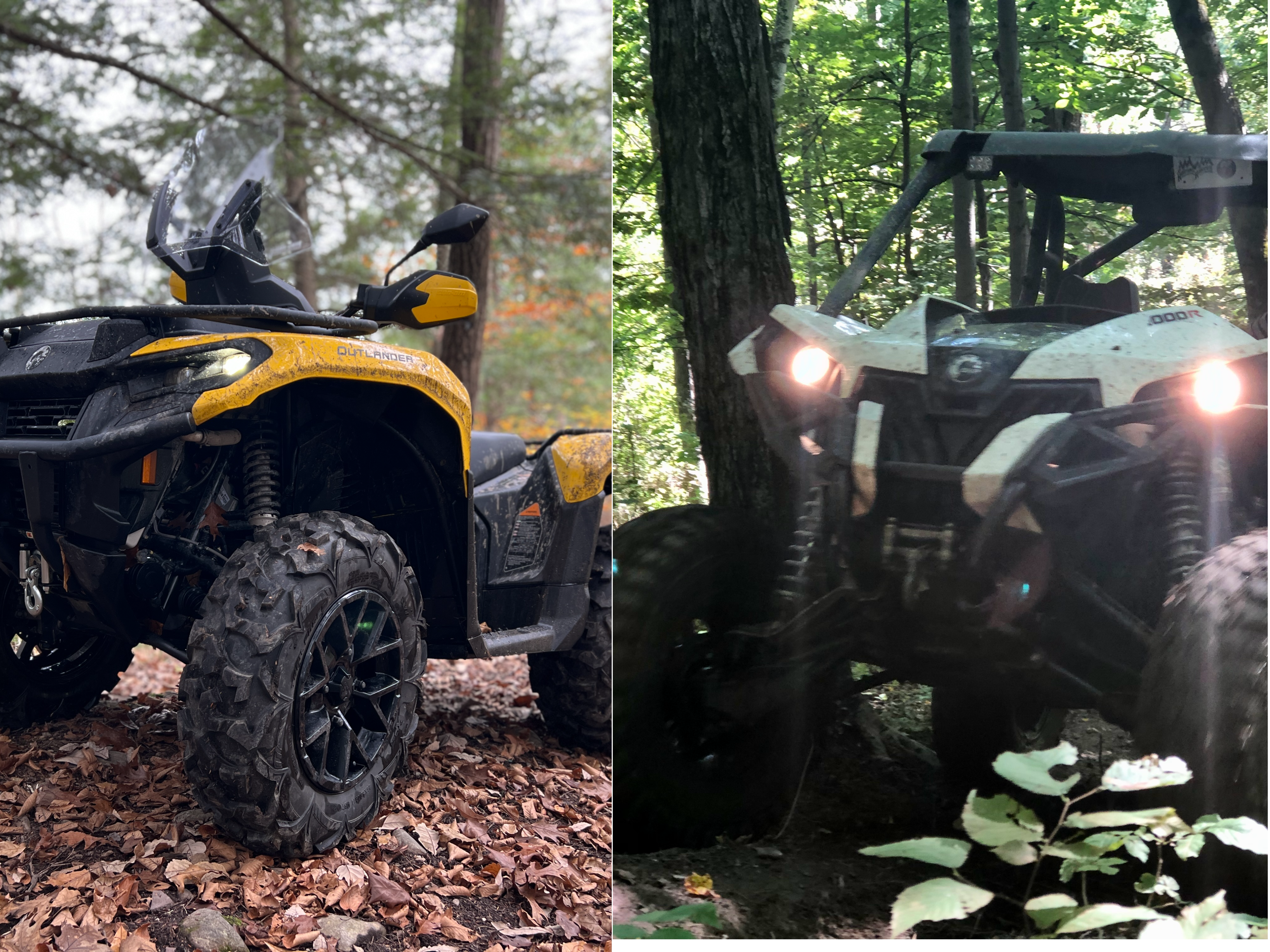The debate is constant. Riders adamantly stick to their sides. Simply put: side-by-side versus ATV. Steering wheel versus handlebars. Straddle seat versus bucket seat. Roll cage versus full exposure. We understood the assignment this debate necessitates; and while this is far too nuanced to ever conclude one is definitively the better machine, our goal is to examine the pros and cons that each provides, using two Can-Am machines, a Maverick 1000R and a new Outlander XT 700, to help settle the debate.

The Setup
We tested and compared a 2016 Can-Am Maverick 1000R XC owned by yours truly and a 2023 Can-Am Outlander XT 700 on loan from the manufacturer on the same trails, albeit on different days, but in similar conditions. Aside from being able to operate both at the same time, this is as close of a controlled test as we could conjure. The players come from the same brand but are markedly different: The Maverick has a width of 60-inches compared to the Outlander’s 48.8-inch body, and has a significantly longer wheelbase of 84.3-inches versus the Outlander’s 53-inch wheelbase. The Maverick uses a 1000-class Rotax V-Twin while the Outlander has the company’s new “we-call-it-a-700-but-it’s-really-a-650” single cylinder powerplant. Different means to similar ends.

The Results
On open trails, the Maverick’s wide stance combined with the sense of security gained from a harness and seatbelt and provides a sense of stability that encourages you to let loose on the throttle. The Outlander’s low-end torque we discussed in our First Test can’t compare to that of the larger, 1000cc V-Twin engine. Sure, the added power alone is reason enough to give the edge on an open trail to the Maverick, but it is also in the ride quality.
The Outlander is as comfortable a ride as you’ll find on an ATV, but at higher speeds we find the wider Maverick to feel more sturdy. Not to discredit the Outlander, as this is more of a reflection in general as most side-by-sides we’ve driven would compare to ATVs the same. However, on tighter trails which are more prevalent in the New York area where we tested these machines, there’s inevitably going to be an innate advantage to the Outlander due to trails being tighter and windier. In these circumstances, the handlebars allow you to quickly change direction at the drop of a dime, which combined with an incredibly smaller turning radius makes the Outlander, or any ATV in comparison to a side-by-side, superior.

In mud, both machines were tested in 2WD and 4WD. Both the Outlander and the Maverick trudged through admirably without even the slightest hint crossing your mind of “oh no we’re going to get stuck.” In deep mud the Maverick seemed to be bogged down slightly more, but this is likely attributed to the extra 500-lbs it weighs.
On the rocks, the Outlander’s ability to maneuver around obstacles gives an innate advantage to the ATV, since your approach can more easily be set up straight and direct. Hill climbs were close to a toss up, depending on how you decide to approach the terrain. A rocky uphill benefitted the Outlander, as you gain the ability to weave through and around, while the Maverick did better plowing straight up a less rough uphill.
Visibility is a massive advantage for an ATV, and this couldn’t be more apparent when comparing these two. On the Outlander you can stand and see over the front end, while being harnessed into the Maverick does not allow you to see nearly anything over the front end, which makes wheel placement incredibly difficult on obstacles and your reliance on a spotter imperative. Combine that with the throttle control of the Outlander and you’d be inclined to give it the edge. However, if the rocks do not allow for the ATV to weave through, we felt more comfortable in the Maverick being secured in a harness and surrounded by a roll cage.

The Conclusion
As we opened with, this comparison was never destined for a true conclusion, but more to demonstrate what the Outlander and Maverick do well and in what scenarios riders are best set up for enjoyable rides. It can be an endless quest to determine which type of machine is right for each rider, and we hope this highlights some benefits and limitations of both the Outlander and Maverick. All that being said, Can-Am struck gold in building both of these machines, and each have a multitude of reasons that they can claim they should be what you ride. We’re excited to continue to test and compare these two machines.


Leave a Reply